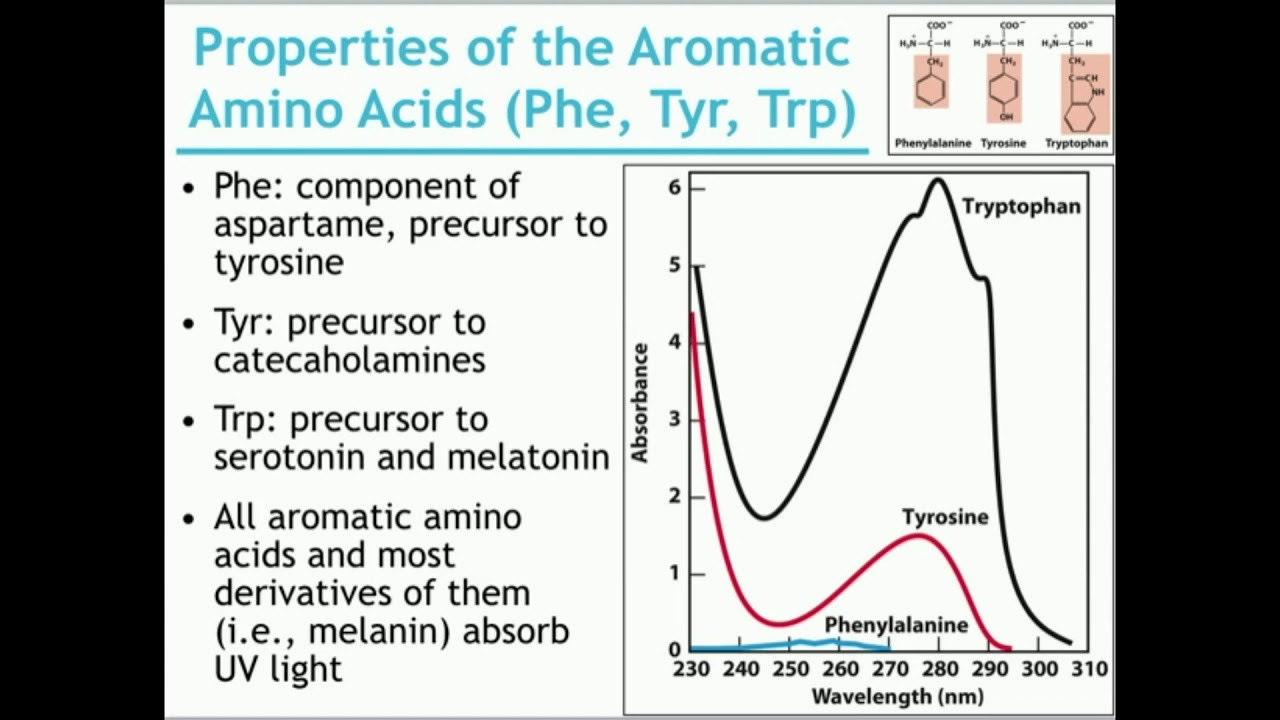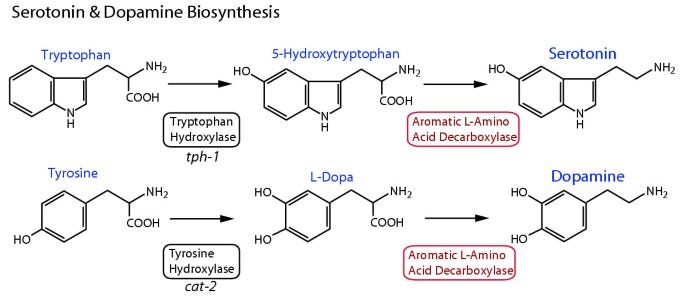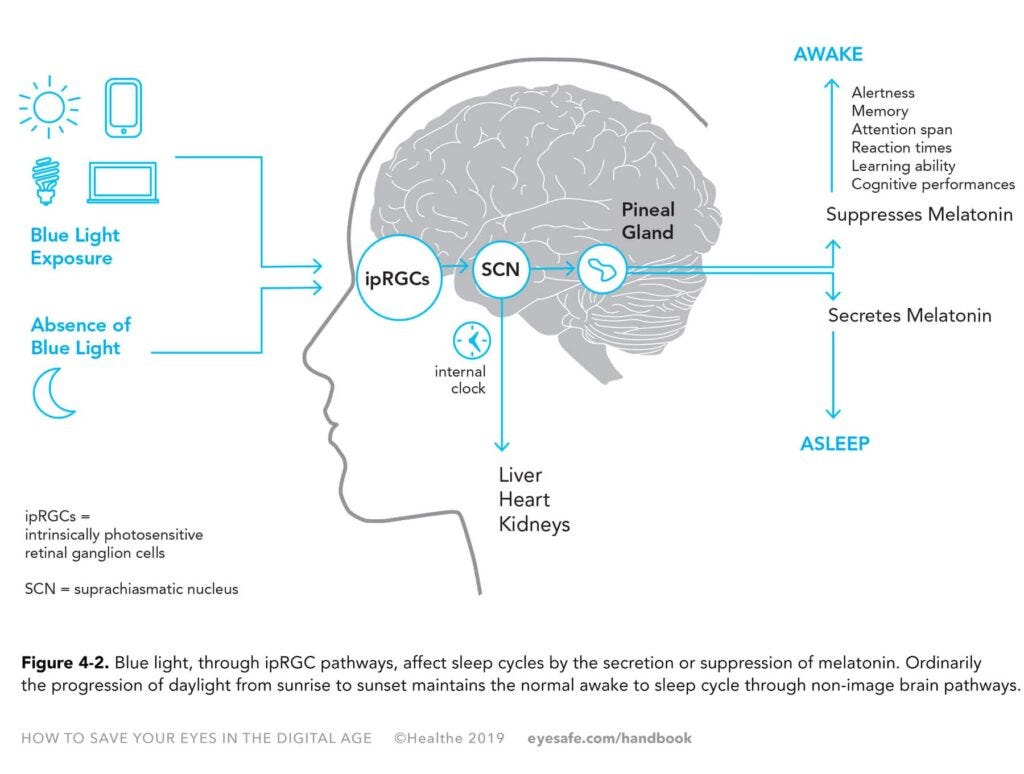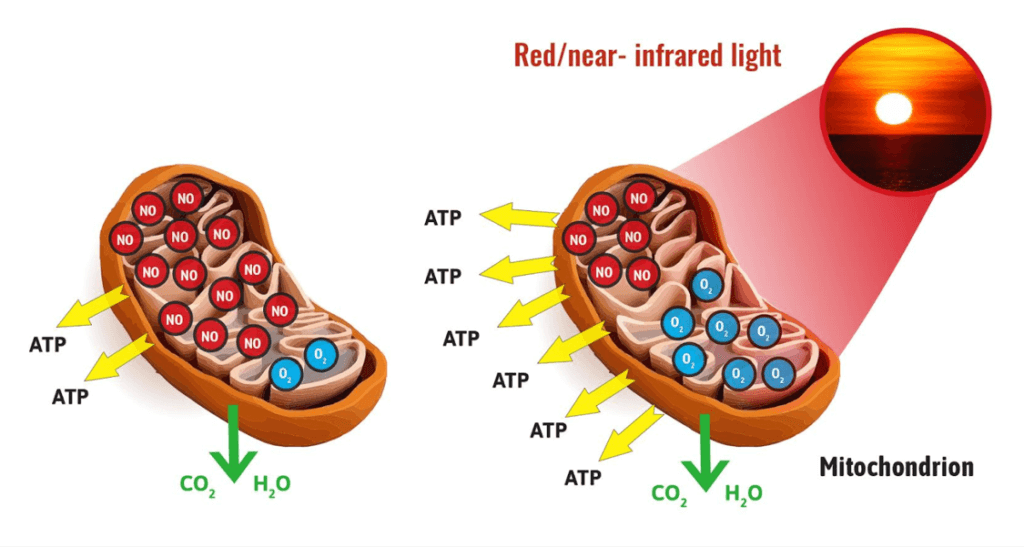Why You Can Never Replace Full Spectrum Sunlight
A Dive into the Different Wavelengths Affect on Our Biology
Introduction
Sunlight is the most important nutrient for our body. That may sound delusional to some, but the definition of a nutrient is: a substance that provides nourishment essential for growth and the maintenance of life. Sunlight certainly is necessary and essential for growth and the maintenance of life, but most don’t understand why. Most do not understand that the real benefit of sunlight is that it provides a vast spectrum of electromagnetic radiation (light) that signals different functions in our biology. This is why we can never replace sunlight with artificial lights, because the sun is a “broad band emitter” and all artificial lights are “narrow band emitters”. This means they only have a few isolated wavelengths, whereas sunlight contains the whole swath.
The other most important aspect of sunlight is that it is time and location dependent. It is always changing…and that change or shift in light frequencies is providing our body the right information about how to function properly in our given environment. Artificial light is constant and provides a consistent/un-natural input signal that confuses our biology.
The last piece, which I will dive into more in a future post…is the fact that sunlight is a continuous electromagnetic wave while indoor lighting is highly pulsed. This is a major reason why eye strain and headaches from staring at screens is so common.
Let’s dive into the important biological effects of the various wavelengths in full spectrum sunlight.
Summary
Sunlight is a broad band emitter and artificial light is a narrow band emitter
Sunlight is an un-polarized, continuous source of electromagnetic radiation. Artificial light is highly pulsed
Sunlight that reaches the earth is comprised of light frequencies that range from 280nm (UVB) to 2500nm (NIR) and everything in between. Each category of wavelength serves as a different biological stimuli
UVB radiation stimulates the production of vitamin D, as well as serotonin and beta-endorphins, UVA promotes the release of nitric oxide into the blood, and both have a positive effect on the diversity of the microbiome and our endogenous hormone production
Violet light can reverse myopia and potentially improve sleep quality
Blue light is the master circadian signaler, turning on/off the SCN via melanopsin photoreceptor…thus regulating cortisol/melatonin production as well as all circadian timing in the body
Green light can treat skin issues and also be used as a pain releiver
Red light, near-infrared radiation (NIR), and far-infrared (FIR) radiation have anti-inflammatory and tissue healing effects…NIR also stimulates the production of melatonin inside the mitochondria, a master anti-oxidant
The Biological Effects of Sunlight: By Color/Wavelength
There are several wavelengths of energy from the sun that reach the earth’s surface and trigger specific actions within the body to influence our health. And, just as some of this spectrum is able to make it through the atmosphere, different wavelengths are also able to penetrate the skin to different depths of the body’s tissues and have certain effects on the cells within those tissues, as you can see in the figure below.
Those at the lower wavelengths (such as UVB) only penetrate the very surface of the skin, while those at higher wavelengths (such as visible light) are able to penetrate deeper. Think of how you are able to see the light from a flashlight on the back of your hand when held against the skin on the palm of the hand – you can visually see the energy traveling through the skin, muscles, blood vessels and tissues of the hand. Infrared radiation can even get into the cells and mitochondria, and can get through clothing and bone!
Ultraviolet-B Radiation (UVB) – Vitamin D, Neurotransmitters, Melanin and Beta-endorphins
UVB (280-315nm) is the highest energy wavelength that reaches surface of the earth. It is only present when the sun is >30 degrees above the horizon. You can use apps like “Circadian” and “dminder” to tell you when UVB is present. At the 45th latitude in Wyoming, I go WITHOUT UVB for around 2 months in winter time. This is a big deal, because UVB light stimulates vitamin D synthesis, one of the most important molecules/hormones in the body. More importantly, it stimulates synthesis of sulfated Vitamin D, which is more bioactive and has far more biological relevance compared to un-sulfated Vitamin D as you would get from a supplement. This is why you can’t replace sunlight with a supplement, especially when it comes to Vitamin D. Using a UVB lamp (outside or in combo with NIR) would be in my opinion a better option than supplementing Vit D, or if you do take a supplement take it mid day and get some UVB exposure after taking it. I wrote extensively about Vitamin D supplementation in a previous newsletter.
The vitamin D produced in the skin can also help protect the skin cells from DNA damage, facilitate DNA repair directly upon any UV damage, help prevent cell death, and protect against melanoma. In fact, keratinocytes, which make up over 90% of the outermost layer of skin, cannot rely on vitamin D3 from supplements and must synthesize their own supply of vitamin D directly from sun exposure, or by topical application.
Besides vitamin D, UVB radiation also promotes the production of neurotransmitters and beta-endorphins, chemicals that drive cognition, mood, relaxation, pain relief, and boost immunity. It also triggers the synthesis of MELANIN. It does this by stimulating proopiomelanocortin (POMC) activity in the brain and via exciting our aromatic amino acids.
POMC is a precursor protein of several neuropeptides, including adrenocorticotropin (ACTH), α-melanocyte stimulating hormone (α-MSH) and β-endorphin (β-END). Our aromatic amino acids (tryptophan, tyrosine, and phenylalanine) have ringed structures that allow them to trap UV light energy, and these aromatic amino acids are the precursors to neurotransmitters dopamine, serotonin, as well as melatonin and melanin. Serotonin is involved in cognition, regulation of feeding behavior, anxiety, aggression, pain, sexual activity, and sleep. These aromatics absorb heavily in the UVB/UVC range.
This UV-induced release of beta-endorphins means only one thing: there is an innate built in addiction pathway to the sun. Our biology is able to provide a “reward” for UV-induced vitamin D synthesis when vitamin D levels are low, during which time a greater amount of beta-endorphins are released upon exposure to UVB. As vitamin D levels rise, the sun-seeking behavior and resulting opioid response become repressed as less vitamin D is needed. It’s almost as if our body knows best, and we should go out of our way to listen to it. Instead, most people will continue to pour the Vit D supplements down their gully.
Melanin, which is synthesized from UV light exposure and activation of alpha-MSH via POMC, is one of the most important molecules in our biology. It absorbs the entire EMR spectrum and acts as both a biological semiconductor and energy storage system (battery). I have written more about it in a previous newsletter and will dive even deeper very soon.
Ultraviolet-A Radiation (UVA) – Nitric Oxide + More
UVA (315-380nm) exists at a wavelength between UVB and visible light, and is able to reach deeper than UVB light but still only a few millimeters. UVA leads to the release of nitric oxide into the bloodstream which in turn benefits the cardiovascular and metabolic systems, and may offer other immunological benefits beyond those offered by nitric oxide. This vasodilatory effect enhances blood flow, lowers blood prressure and improves circulation.
UVA can have similar effects to UVB such as stimulating POMC and the neuroendocrine axis, just with lesser efficiency compared to UVB light as it is a lower energy wavelength spectrum so it does not have as great of an excitatory effect on our biology.
“UVA has better penetration reaching the reticular dermis but has 1000 times lower efficiency at inducing biological effects (expressed as the minimal erythema dose) than UVB”
UVA also shares some benefits with violet light (visible) such as reversing myopia in the eyes. Will discuss that more in the Violet light section.
Ultraviolet Radiation (UVA + UVB) – The Most Important Input for Your Microbiome
Your gastrointestinal tract and the surface of the skin are home to trillions of microbes (bacteria, viruses, and yeast), called your “microbiome,” which act as their own organ and are crucial to your overall health. Skin health in particular is maintained by a balanced, diverse microbiome, which is in turn affected by nutrition, pH level, hygiene, exposure to toxins, barrier strength, stress levels, sunlight exposure, and overall health.
UV exposure (and vitamin D itself) can have a healthy, regulatory effect on the microbiome of the skin and the gut, with UVB light having a beneficial impact on the diversity and abundance of the bacteria species of the gut microbiome, and UVB as well as UVA benefitting the skin microbiome. Studies have even shown that several molecules that help protect our skin from UV damage can be produced by the microbiome on our skin upon UV exposure, acting as a sort of natural sunscreen.
Why is UV light so good for our gut? Two reasons:
Remember those aromatic amino acids and neurotransmitters mentioned earlier? Well a vast majority of aromatics are synthesized by your gut microbes via the famous shikamate pathway (famous because glyphosate disrupts this). As a result, most of your neurotransmitter synthesis is happening in the gut. 90-95% of serotonin and 50% of dopamine is produced and stored in the gut. There is a reason it is called your second brain, and it is not fully due to the vagal nerve connection.
Your bacteria absorb and fluoresce light constantly. We are made up of far more “bacteria” cells than our own cells and this microbiota is highly dependent on light input. It seems that UV light modulates pathogenic bacteria and helps beneficial bacteria proliferate. This is why UV light has been known as an effective method for cleaning surfaces.
UV Light Summary
UV light is imperative for properly functioning biology, and the fact that it has been demonized for “causing skin cancer” has resulted in a chronic health epidemic. Yes, solar tolerance and callus matters…that is why being outside all year round is imperative. UV light is the reason life began on this planet in the first place (read Nick Lane’s work on deep sea vents), and it stands true today that nearly ALL of the biological semi-conductors that power our biology absorb strongest in the UV range. When you can harness UV light, you become what it truly means to be a human being.
Blue Light – Regulation of Circadian Rhythm, and Melatonin
Blue light (420-500nm) perhaps ma be the most well known light in the visible spectrum. It has been vilified (for good reason) as the light that will disrupt our sleep. This is true, but that does not mean that blue light has a negative impact on our health in the right context, the opposite actually.
Blue light is the master circadian signaler. We sense it in our eyes and skin via the melanopsin receptor and the signal is what sets our bodies master circadian clock: the suprachiasmatic nucleus (SCN). This is how our body tells time, and this is why our blue light and overall light environment is so important. Blue light at night suppresses melatonin production far greater than any other color of light. Blue light conversely stimulates cortisol production, which is what provides wakefulness in the morning.
Blue light is the highest energy wavelength that is present for almost the entirety of sunlight exposure, with an ever increasing amount until solar noon…and then decreasing amount in the afternoon. Again, this is how our body tells time. If you subscribe to the fact that our circadian rhythm is one of if not the most important aspect of our biology (timing is everything), then you would agree that your blue light environment may be the most important area of your health to tackle. This is why there has been such a monumental push on the education around artificial blue light and an entire industry made around blocking blue light.
A healthy, regular circadian rhythm promotes healthy mood and improved cognition. Disruptions to circadian rhythm have been shown to increase the risk of most chornic diseases: including cancer, heart disease, neurodegenerative disease and metabolic conditions. Research has found that, compared to white light therapy, blue light is more effective for resetting circadian rhythms, suppressing nighttime melatonin, and enhancing performance. Other physiological actions of blue light suggested by the scientific literature include an increase in circulating beta endorphins, decreased systolic blood pressure due to nitric oxide mechanisms in the skin, an anti-bacterial effect, and a potential bio-modulating effect within the cells.
Blue light (like all areas of the light spectra) deserves an article of its own. I will be releasing an article dedicated to artificial blue light next month so stay tuned!
Red and Infrared Light - Healing Wavelengths
Red and infrared light is the most abundant portion of full spectrum sunlight, making up over 50% of the sunlight that hits the earth. Most of this is coming in the form of Near Infrared light (750-3000nm). Photo-biomodulation is a term used to describe the physiological effects from irradiation by red or near-infrared wavelengths. Red and near-infrared wavelengths have the ability to penetrate inside of our body’s tissues and cells, and can even penetrate through clothing. Studies have shown benefits such as improved tissue function, wound healing, anti-inflammatory effects, and improved energy metabolism from red and near-infrared wavelengths.
Conditions that may benefit from photobiomodulation include allergies, hypothyroidism, depression, dementia, cancer, diabetes related symptoms, exercise performance and recovery, pain, and cardiovascular diseases.
I have written an article on this substack that dives deep into the benefits of NIR light, and why I think it is the biggest nutrient deficiency worldwide (sunlight = NIR). NIR light (over 950 nm) may penetrate as deep as 8 cm and can penetrate bone, enter the cerebrospinal fluid and the brain.
Why is Red/NIR light so beneficial for our health ? Because it up-regulates ATP production and expands our exclusion zone water. You may have heard how fantastic Red/NIR light is for mitochondria…that is 100% true. Part of that reason is due to melatonin synthesis which is highlighted below. The other part is because it up regulates ATP production by expanding the exclusion zone water around the ATP nanomotor-reducing its viscosity and improving rotational torque. Bit complex yes, but that is the reality of our biology. ATP opens the binding site of proteins to water, which need to be hydrated to function properly as biological semiconductors so you could say that Red/NIR is IMPERATIVE for optimal biological function.
NIR light & Intracellular Melatonin Synthesis
Recent research by Zimmerman, S. and Reiter R. suggests that melatonin (a master antioxidant) exists in two main forms within the body – circulatory melatonin, which is suppressed during the day upon exposure to blue light and has its major effect on sleep and the circadian rhythm, and sub-cellular melatonin, which is produced and used locally by the mitochondria within our cells. NIR light stimulates melatonin production in the mitochondria, which helps protect the cells from oxidative stress from whatever stressors/toxins make their way into the mitochondria. It also helps naturally combat the free radicals generated from UV exposure. This is why Red/NIR wavelengths are so healing, and balance out the high energy and biologically damaging (to some degree) Blue/UV wavelengths. There is always a far higher amount of NIR light than any other light in the spectrum when it comes to energy and power density.
I have written an in depth article about Melatonin as well, because it is so much more than a “sleep hormone”. Zimmerman brilliantly discusses this in his work and how most of the circadian community misses this piece. Melatonin is THE MASTER ANTIOXIDANT, being able to stabilize up to 10 free radicals per molecule due to its remarkable cascading antioxidant abilities.
Violet, Green, Yellow/Orange Light
Violet light (visible) is hard to find research on but can be thought to range from 360-420nm, right after UVA (or even some overlap) and right before blue light in the ascending wavelength spectrum of full spectrum sunlight.
Japanese research showed that violet light (360–400 nm wavelengths) suppressed the axial length elongation both in a chick myopia model and in human. They also spiked out the fact that we are violet light deficient in a modern, indoor world because of the fear mongering around UV light. Blue light from screens causes myopia and violet/UVA light reverses it…
Violet light is also being studied for its potential benefit to improve sleep quality.
Green light (495-570nm) penetrates your dermis, almost reaching the subcutaneous tissue below. Studies have shown that green light is effective for relieving pain. Green light is also beneficial for treating skin condictions, especially with regard to skin tone and complexion. Sunspots, melasma, rosacea, eczema, and psoriasis can all benefit from green light. Another tout to the importance of full spectrum sun is the under discussed skin HEALING frequencies such as green + red to balance the high energy UV.
Green Light:
Might be used in attempts to reduce skin redness and irritation.
Has been studied for potential pain-reducing properties.
Yellow and Orange light. Lesser research around these wavelengths but including them anyways. These wavelengths penetrate the subcutaneous tissue beneath your dermis. Like green and blue light, they are effective at treating skin issues like eczema, sunburn, psoriasis, and creating an even skin tone. Yellow and orange light therapy is one of the less common types; however, it can help flush waste from your skin, elevate the functioning of your lymphatic system, and stimulate cellular energy to some extent.
One study proved that 590 nm light therapy after laser skin treatments reduced the intensity and healing time of skin irritation.
Yellow light:
Sometimes used to stimulate collagen production in the skin.
Has been used in lightbox therapies for mood regulation.
Orange light:
Often used in attempts to revitalize skin and promote a vibrant complexion.
Might be utilized for its potentially energizing and uplifting effects.
Conclusion
You can not replace full spectrum sunlight with light therapies that have only a few isolated frequencies. Sunlight contains such a vast amount of frequencies that all affect our biology in different ways and together provides a very synergistic affect. Our biology has evolved over millions of years to take the FULL SPECTRUM sun as our main input signal.
Light therapy can still be beneficial in certain scenarios without a doubt, but it will never replace full spectrum sunlight. This is a challenge in our modern indoor world we live in, and that is why we need to be so deliberate about going outside. That is also why I am so excited to be working with Daylight Computer, the world’s first computer that is designed to be used outside and has reflective screen technology that doesn’t destroy your retinas. Much more to come on Daylight Computer …so for now here is a repeat of the summary:
Sunlight is a broad band emitter and artificial light is a narrow band emitter
Sunlight is an un-polarized, continuous source of electromagnetic radiation. Artificial light is highly pulsed
Sunlight that reaches the earth is comprised of light frequencies that range from 280nm (UVB) to 2500nm (NIR) and everything in between. Each category of wavelength serves as a different biological stimuli
UVB radiation stimulates the production of vitamin D, as well as serotonin and beta-endorphins, UVA promotes the release of nitric oxide into the blood, and both have a positive effect on the diversity of the microbiome and our endogenous hormone production
Violet light can reverse myopia and potentially improve sleep quality
Blue light is the master circadian signaler, turning on/off the SCN via melanopsin photoreceptor…thus regulating cortisol/melatonin production as well as all circadian timing in the body
Green light can treat skin issues and also be used as a pain releiver
Red light, near-infrared radiation (NIR), and far-infrared (FIR) radiation have anti-inflammatory and tissue healing effects…NIR also stimulates the production of melatonin inside the mitochondria, a master anti-oxidant
Sunlight is the ultimate provider of light. Your light/EMF diet matters more than anything else in regards to health.
Biology is fundamentally electromagnetic.
Stay Sovereign,
Tristan
My NEW COURSE EMF-201 is officially out! An in depth educational course that follows my flagship EMF-101 course. Diving deep into Radio Frequencies, 5G, and Modern Tech with an appearance from an RF Engineer who has 20+ years of industry experience.
Follow my Decentralized Radio podcast for some brilliant upcoming episodes on light and EMFs.








Wow dude, this is Jack Kruse level of detailed info, but described in a way normal humans can understand
Great summary man, enjoyed it.